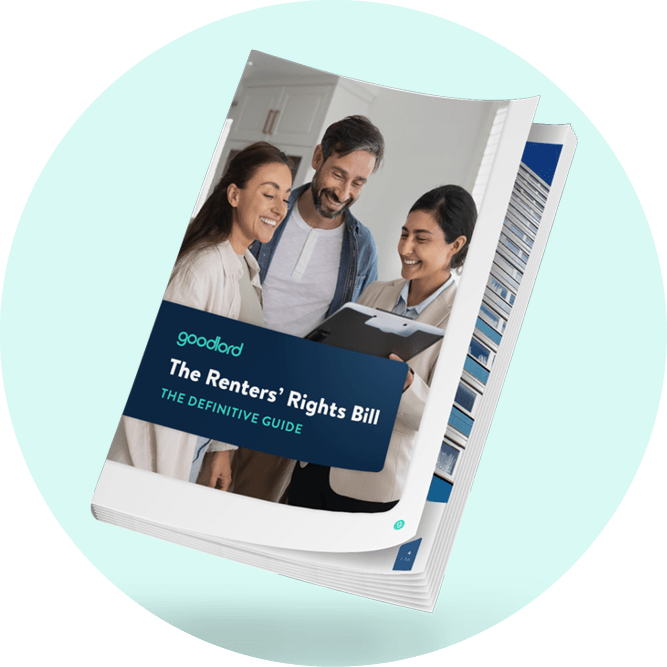5 surprising takeaways from the UK Spending Review (2025)
Chancellor of the Exchequer, Rachel Reeves, delivered some welcome news for the private rented sector in the 2025 Spending Review on Wednesday, June 11.
In the recent Spending Review, the government declared that it plans to “renew Britain” with billions of pounds in funding to support its priorities for public services, infrastructure, and economic growth.
Following the announcement, most in the private rented sector (PRS) breathed a sigh of relief, as Reeves directed close to £60 billion to housing-related policies.
In this article, we’re going to take you through the key housing takeaways and what they might mean for you.
- £39 billion for a new 10-year Affordable Homes Programme
- £4.8 billion in financial transactions between 2026 and 2030
- Additional infrastructure and land remediation funding
- £13.2 billion between 2025 and 2030 for the Warm Homes Plan
- Increased funding to the court system by 2029
- Conclusion
1 - £39 billion for a new 10-year Affordable Homes Programme
Let’s start with the obvious.
This is the most significant investment in social and affordable housing in a decade, and it’s exciting for the UK market for one key reason:
The government is pledging to address the chronic housing shortage currently affecting the UK by building 1.5 million new homes, with a substantial portion dedicated to social housing.
The new homes entering the market will help match supply with demand across all tenures.
William Reeve, CEO of Goodlord, analysed the government’s commitments further:
“We welcome the announcement that the Government plans to double spending on affordable housing - the immediate bump to house-builder share prices that immediately followed the Chancellor's speech is testament to how this is being received across the industry.
“This £39B commitment could not come a moment too soon. The myriad pressures on the housing market — from rising rents and retreating landlords, to crumbling social properties and escalating numbers living in temporary accommodation — all of it stems back to a historic failure to ensure our housing stock keeps up with population growth.
“We need to focus all efforts on driving up the number of homes available and closing a gap that's been rising year-on-year.
“[The government’s] funding commitment is a key announcement for the market and includes other much-needed reforms such as a sensible step forward on social rents and £10bn for financial investments.
“The big hope is that this money, combined with planning reforms, will see the OBR's forecast — that house building will hit its highest level in over 40 years by 2029/30 — come to fruition.”
2 - £4.8 billion in financial transactions between 2026 and 2030, stimulating private housebuilding investment
The UK government’s commitment of £4.8 billion in “financial transactions” from 2026–27 to 2029–30 is a big step towards stimulating private housebuilding investment.
Delivered through public institutions such as the National Wealth Fund, the British Business Bank, and UK Export Finance, this funding is designed to de-risk housing projects by providing loans, equity, and guarantees. These mechanisms aim to unlock private capital, particularly for developments that may be too risky or too large-scale for private investors to undertake alone.
The National Wealth Fund’s role in mobilising investment aligns closely with housing goals, while the British Business Bank supports SMEs in construction, improving credit access and project viability. UK Export Finance may further assist by ensuring access to materials and technologies.
3 - Additional infrastructure and land remediation funding to support new housing development
House-builders rejoice! The government has said that it plans to partner with the private sector to remove red tape wherever possible and get homes built quickly.
The funding supports various activities, including land acquisition, site preparation, and the provision of essential infrastructure such as utilities and transport links. By de-risking these projects, the government hopes to encourage private developers to invest in areas that might otherwise be considered too challenging or costly.
The government’s investment in infrastructure and land remediation is a crucial component of its strategy to increase housing supply, stimulate economic growth, and enhance living conditions through effective public-private partnerships.
4 - £13.2 billion between 2025 and 2030 for the Warm Homes Plan
The UK government’s £13.2 billion Warm Homes Plan is a substantial investment that is expected to have a significant impact on the rental market.
A key component of the plan is the Warm Homes: Social Housing Fund, which allocates funding to social housing providers for energy efficiency upgrades. This initiative is anticipated to benefit tenants in social housing by improving living conditions and reducing energy costs.
The government’s commitment to raising minimum energy efficiency standards for rented homes by 2030 is expected to drive improvements in housing quality. By setting higher standards, the plan encourages landlords to invest in energy-efficient upgrades, resulting in better living conditions for tenants and potentially reducing disputes related to housing standards.
There have been concerns over the incoming energy efficiency legislation amongst landlords. The government’s decision to increase the minimum EPC standard to C by 2030 will affect 2.5 million homes.
The necessary upgrades have been estimated to cost up £6,864 per property, leading to concerns over the likely impact on rents and whether the money saved in energy bills will match the cost of the new upgrades.
5 - Increased funding to the court system by 2029
In addition to the funding directed towards the housing industry, the government has earmarked £450M in increased funding for the court system by 2029.
The stated reason for this is to help the courts tackle the backlog of cases and improve court productivity. The government also aims to increase its annual capacity to process asylum appeals, thereby helping to reduce illegal and irregular migration and lower asylum costs.
Concerns have been repeatedly raised about the court system's capacity to handle housing cases during debates on the Renters’ Rights Bill. After the Bill becomes effective, tenants will have the power to challenge Section 13 rent increases while the new private rented sector ombudsman will attempt to resolve more tenant-landlord disputes out of court.
Increased funding to the courts should also help these cases move through the system faster and alleviate some of the worry that landlords have been feeling over the legislation. However, we're a long way off that yet.
Conclusion
The 2025 Spending Review steps up the government’s spending commitments on housing. In theory, the almost £60B pledge allows it to tackle long-standing issues across the sector.
For the private rented sector, these announcements are a welcome sign of stability and opportunity. From the Affordable Homes Programme to investment in energy efficiency and court reform, these initiatives could help to reshape the landscape for tenants, landlords, and letting agents alike.
While the success of these plans will hinge on effective implementation and ongoing collaboration between the public and private sectors, this could be a moment of renewal for the UK housing market.









